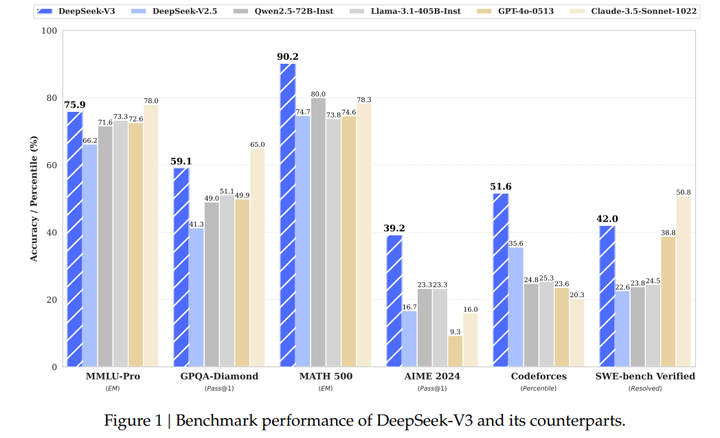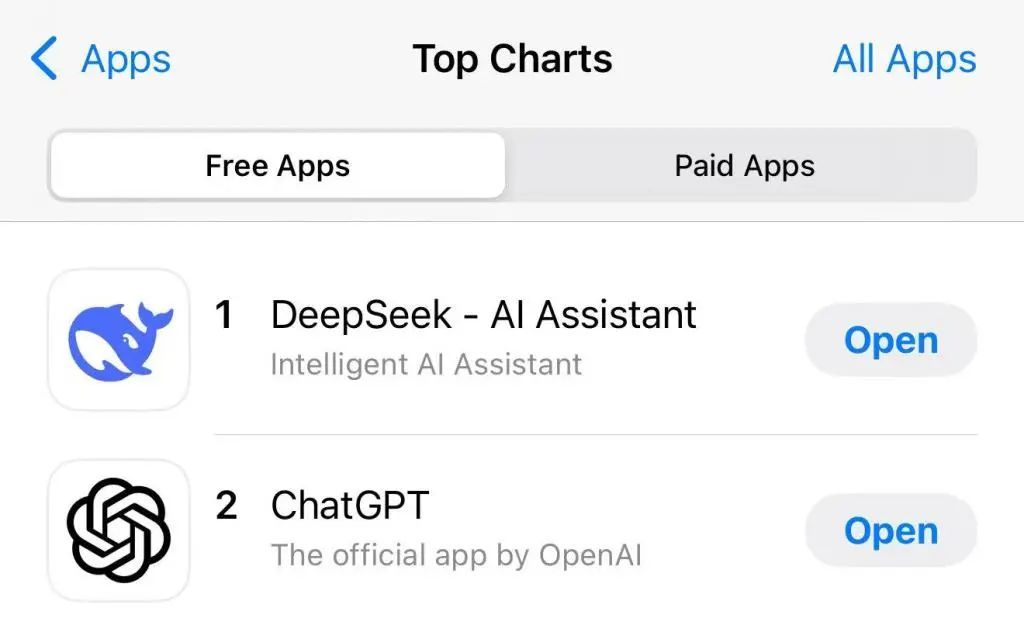Artificial Intelligence (AI) has been evolving at a breakneck pace, and the recent announcement that DeepSeek’s latest model has surpassed the performance of GPT-4 has sent ripples through the tech community. This article delves into the technological breakthroughs behind DeepSeek’s success and explores the implications for the future of AI.

Introduction to DeepSeek and its rapid rise in the AI field
DeepSeek, a relatively young player in the AI arena, has quickly made a name for itself with its innovative approach to developing large language models (LLMs). Founded in 2023, DeepSeek has already made significant strides, challenging industry giants with its high-performance models. The company’s latest offering, DeepSeek-R1, has garnered attention for its ability to match and even exceed the capabilities of OpenAI’s GPT-4 in various tasks, including natural language processing, code generation, and mathematical reasoning.
Technical breakthroughs enabling DeepSeek’s superior performance
DeepSeek’s success can be attributed to several key technological advancements. One of the most notable is its use of a unique training methodology that allows the model to spontaneously develop reasoning capabilities through deep learning. This approach, combined with innovations in model architecture such as the Mixture-of-Experts (MoE) framework, has resulted in a model that is not only powerful but also highly efficient. DeepSeek’s models require significantly fewer computational resources compared to their competitors, making them more accessible and cost-effective.

Performance comparison between DeepSeek and GPT-4
When it comes to performance, DeepSeek’s latest models have demonstrated remarkable capabilities. In benchmark tests, DeepSeek-R1 has shown comparable or even superior performance to GPT-4 in areas such as mathematical problem-solving, code generation, and natural language understanding. For example, in the AIME 2024 test, a challenging mathematical competition, DeepSeek-R1 outperformed GPT-4, showcasing its advanced reasoning abilities. Additionally, DeepSeek’s models have proven to be highly effective in long-context tasks, where the ability to understand and generate coherent text over extended passages is crucial.
The significance of DeepSeek’s open-source strategy
DeepSeek’s decision to adopt an open-source model has far-reaching implications for the AI community. By making its models freely available, DeepSeek is democratizing access to advanced AI technology, allowing developers and researchers worldwide to build upon and customize these models for various applications. This approach fosters a collaborative environment that can accelerate innovation and drive the development of new AI solutions. The open-source nature of DeepSeek’s models also provides transparency, enabling the community to scrutinize and improve the models collectively.
Commercialization prospects and cost-effectiveness
From a commercial perspective, DeepSeek’s models offer a compelling value proposition. The company’s focus on cost-effectiveness has resulted in models that deliver high performance at a fraction of the cost of their competitors. For instance, the training cost of DeepSeek’s models is significantly lower than that of GPT-4, making them an attractive option for businesses looking to integrate AI into their operations without breaking the bank. This cost advantage, combined with the models’ superior performance, positions DeepSeek well for widespread adoption across various industries.
Ethical considerations and potential challenges
As with any powerful technology, the rise of DeepSeek’s advanced AI models raises several ethical concerns. One of the primary issues is the potential for misuse, such as generating misleading information or engaging in malicious activities. Additionally, there are concerns about data privacy and security, given the vast amounts of data required to train these models. DeepSeek must navigate these challenges carefully, ensuring that its models are used responsibly and that appropriate safeguards are in place to protect user data and prevent harmful applications.
Conclusion and future outlook
DeepSeek’s latest models represent a significant leap forward in the field of AI, offering performance that rivals and in some cases surpasses that of GPT-4. The company’s innovative approach to model development, combined with its open-source strategy and focus on cost-effectiveness, positions it as a major player in the AI landscape. As DeepSeek continues to push the boundaries of what is possible with AI, the future looks promising, both for the company and for the broader AI community.
Questions and Answers
- How does DeepSeek’s training methodology differ from that of GPT-4?
- DeepSeek employs a unique training approach that allows its models to spontaneously develop reasoning capabilities through deep learning, rather than relying on traditional supervised fine-tuning. This method enables the model to adapt and improve more dynamically.
- What are the key advantages of DeepSeek’s MoE architecture?
- The Mixture-of-Experts (MoE) architecture used by DeepSeek enhances the model’s efficiency and performance. It allows for dynamic parameter activation, reducing computational costs while maintaining high performance.
- How does DeepSeek’s open-source model benefit the AI community?
- By making its models open-source, DeepSeek democratizes access to advanced AI technology. This fosters a collaborative environment where developers and researchers can build upon and customize these models for various applications, accelerating innovation.
- What are the cost advantages of using DeepSeek’s models compared to GPT-4?
- DeepSeek’s models offer significantly lower training and operational costs compared to GPT-4. For example, the training cost of DeepSeek’s models is a fraction of that of GPT-4, making them more accessible and cost-effective for businesses.
- What ethical concerns are associated with DeepSeek’s advanced AI models?
- The primary ethical concerns include the potential for misuse, such as generating misleading information or engaging in malicious activities. Additionally, there are concerns about data privacy and security, given the vast amounts of data required to train these models.
- What are the future prospects for DeepSeek’s technology?
- DeepSeek’s continuous innovation and focus on performance and cost-effectiveness position it well for widespread adoption across various industries. The company is also exploring applications in AI for Science, such as protein design and materials discovery, further expanding the potential impact of its technology.





